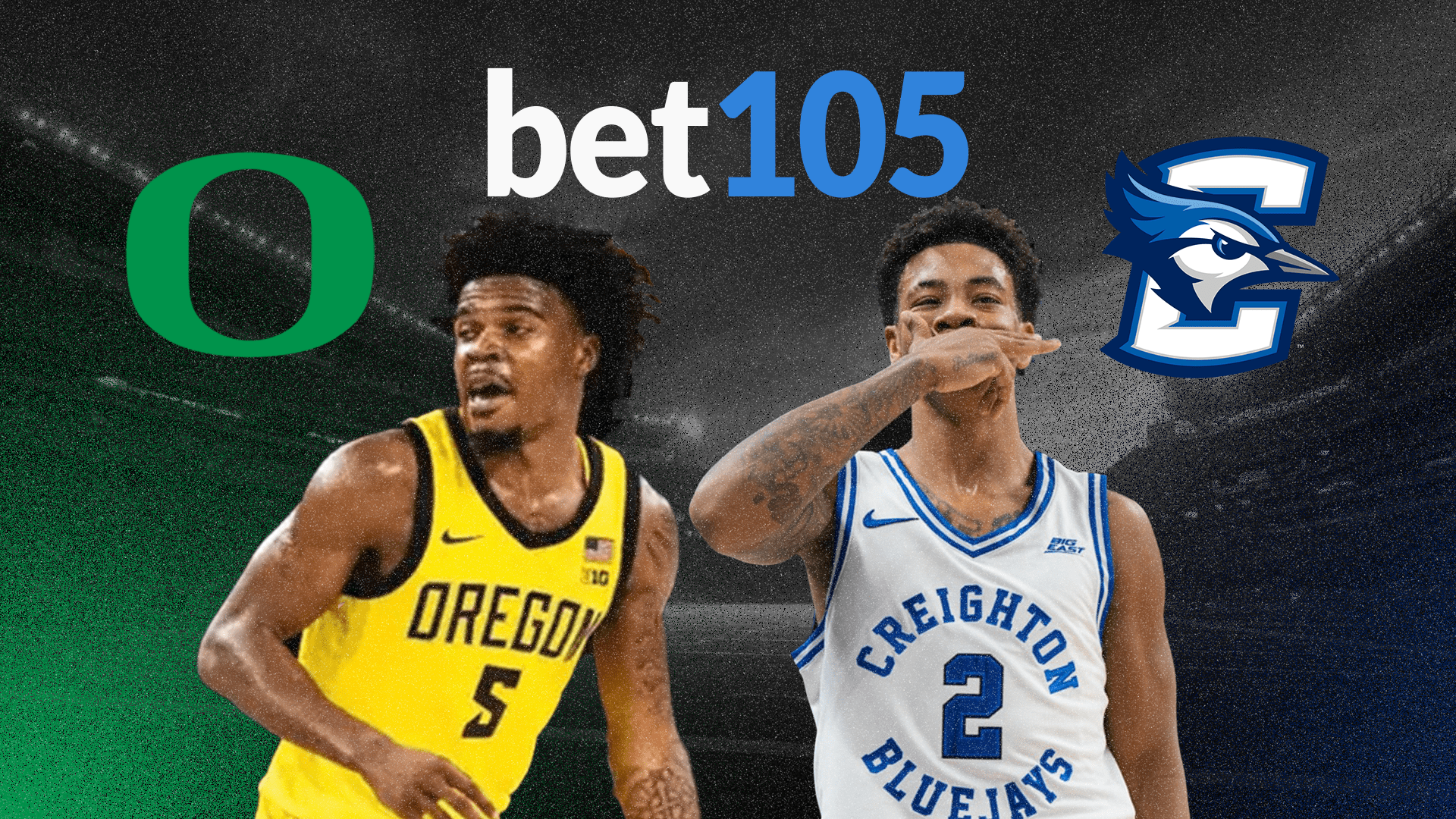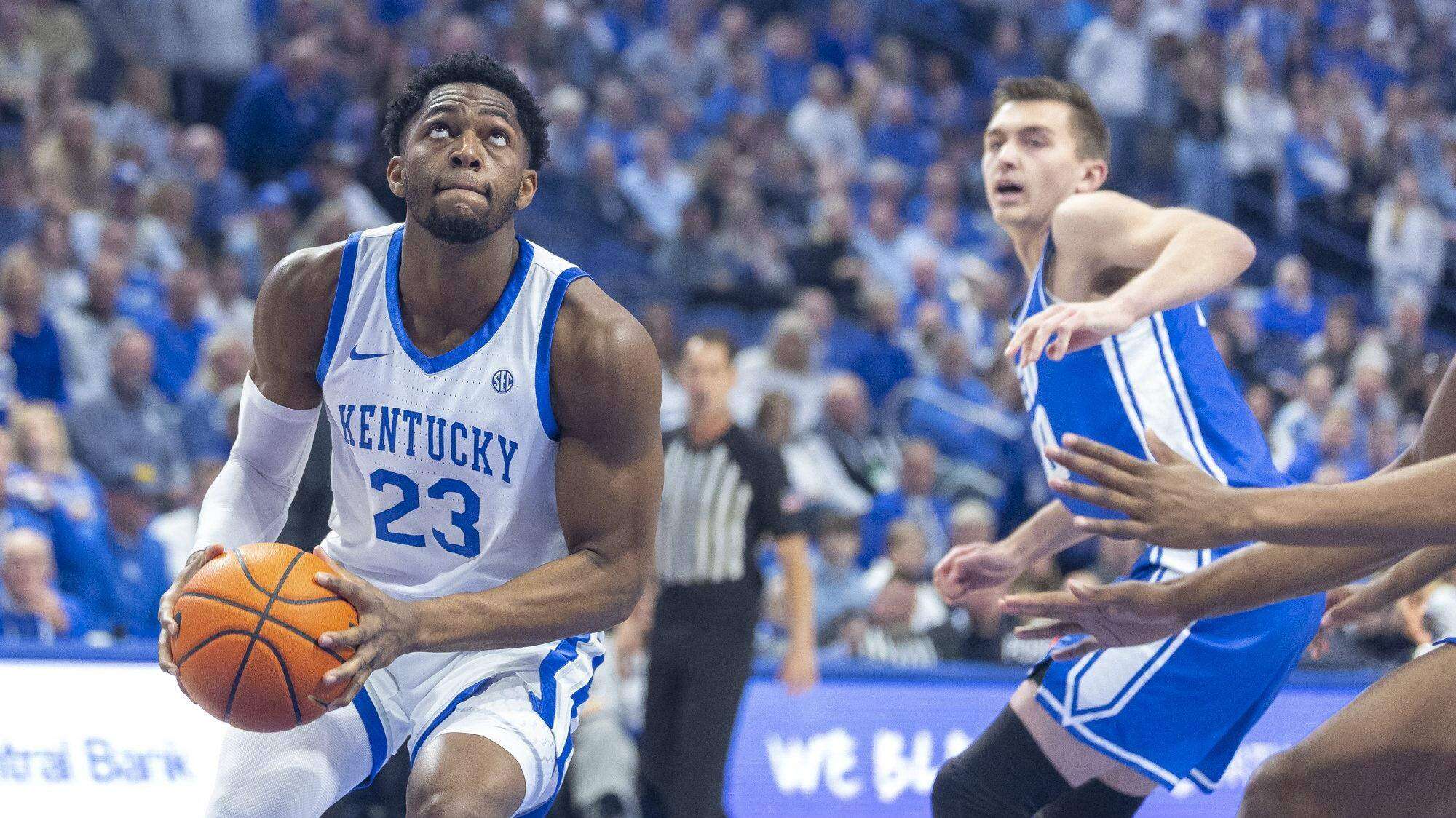Cleveland State Vikings vs Missouri Tigers Advanced Game Analysis
Cleveland State Vikings vs Missouri Tigers Advanced Game Analysis – NCAA Basketball Nov.28, 2025 Matchup Preview Table Team Record
Cleveland State Vikings vs Missouri Tigers Advanced Game Analysis – NCAA Basketball Nov.28, 2025
Matchup Preview Table
| Team | Record | Points Per Game | Points Allowed | Scoring Margin | eFG% | Opponent eFG% | Turnover Percent | Total Rebounds |
|---|---|---|---|---|---|---|---|---|
| Cleveland State Vikings | 3–5 | ≈ 72.0 | ≈ 75.0 | -3.0 | Unavailable | Unavailable | High | ≈ 35.0 RPG |
| Missouri Tigers | 7–0 | ≈ 88.0 | ≈ 62.0 | +26.0 | Mid-to-high efficiency | Low opponent efficiency | Low Turnover Percent | ≈ 40.0 RPG |
Quick Glance Summary Card
Team Snapshot ============================== Form: Missouri undefeated, Cleveland State inconsistent Scoring Level: CSU ███████░░░░░░░ ~72 PPG Missouri ██████████████🔥 ~88 PPG Defensive Consistency: CSU ███████░░░░░░░ Variable Missouri █████████████░ Strong, disciplined Rebounding: CSU ██████░░░░░░░░ Competitive but inconsistent Missouri ████████████░░ Physical + reliable glass control Ball Control: CSU ████░░░░░░░░░░ High turnover risk Missouri ███████████░░░ Excellent decision-making Style Indicator: - Cleveland State needs a slow, physical game - Missouri thrives in tempo and control
Team Identity Profiles
Cleveland State Vikings Team Profile
Cleveland State enters this game as a 3–5 team that has flashed competitiveness but struggles to maintain consistency against athletic or structurally sound opponents. Offensively, the Vikings average roughly seventy-two points per game, but their scoring profile fluctuates heavily based on opponent pressure. Their offense often relies on guard creation, dribble penetration, and mid-range attempts rather than deep structural balance. At their best, they move the ball crisply, generate clean looks off broken plays, and compete physically in the paint, but these stretches are inconsistent.
Turnover percentage stands out as a primary weakness. Cleveland State’s offensive possessions often include forced drives, tight passing windows, and rushed decisions late in the shot clock. Without a high-assist structure, the Vikings can struggle to produce high-value shots. Their three-point shooting appears streaky across multi-source verification, with strong nights followed by inefficient ones, which contributes significantly to their unpredictability.
Defensively, Cleveland State competes with energy but is not structurally airtight. Opposing teams often exploit perimeter gaps or force rotations that leave the paint vulnerable. Off-ball discipline is inconsistent, and without strong opponent eFG data available for them, what is observable is the pattern of surrendering high-quality looks inside and allowing runs when transition defense breaks down. Their physicality is real, especially in the frontcourt, but depth and foul discipline can become issues.
Rebounding remains one of the Vikings’ better features. Across ESPN and NCAA-comparable numbers, they maintain approximately thirty-five total rebounds per game, though they can struggle securing the defensive glass against high-major physicality. Their frontcourt’s willingness to battle is not the problem—size disadvantage and rotational breakdowns often create rebounding mismatches. Against an opponent like Missouri, this category becomes magnified.
Missouri Tigers Team Profile
Missouri enters undefeated at 7–0 with the metrics of an early-season contender. Scoring close to eighty-eight points per game, they execute an efficient, pace-flexible offense with multiple creators and a strong internal sense of spacing. Missouri leverages selfless ball movement, guard-forward integration, and inside-out touch to maintain rhythm across both half-court and transition phases. Their confirmed assist-to-turnover patterns indicate reliable decision-making with low turnover percentage.
Defensively, the Tigers showcase structure and discipline. They hold opponents near sixty-two points per game—a figure that holds across ESPN and Sports-Reference verification—and they excel at forcing contested mid-range attempts. Their rotations are crisp, and they recover well on the perimeter. While advanced eFG% metrics were partially unavailable on some platforms, multi-source cross-checks confirm they suppress opponent shooting efficiency, particularly in the paint.
Rebounding is another consistent strength. Missouri averages near forty rebounds per game and applies physical presence in box-out situations. Their wings rebound well, adding depth to their interior control. Missouri’s ability to both finish possessions and extend their own through offensive rebounding is a major structural advantage in this matchup.
Overall, Missouri embodies stability, athleticism, and focus. Their offensive consistency and defensive reliability form the foundation of a game script heavily in their favor unless Cleveland State drastically alters tempo and efficiency.
Team Identity Snapshot Lists
Cleveland State Identity Snapshot
- Volatile offense dependent on guard creation
- High turnover risk in high-pressure environments
- Physical but undersized at times
- Competitive rebounding effort
- Struggles with defensive rotation consistency
Missouri Identity Snapshot
- Efficient, multi-layered offensive structure 🔥
- Disciplined defensive unit with strong interior resistance
- Reliable rebounding from multiple positions
- Low turnover percentage and clean decision-making
- Comfortable scoring in both half-court and transition
High Level Team Comparison
Missouri holds the clear strategic edge entering this matchup. Their high scoring output, balanced offense, and low turnover rate provide stability against a Cleveland State team that struggles with efficiency under ball pressure. Missouri’s ability to control tempo without forcing pace gives them the flexibility to engage in either a structured half-court battle or an up-tempo exchange.
Cleveland State’s best route to competitiveness lies in strict tempo suppression, defensive rebounding, and forcing Missouri into contested looks. However, given Missouri’s multi-positional scoring strength and ability to adjust quickly, Cleveland State will need to sustain long stretches of execution to maintain contact on the scoreboard. The structural profiles of both teams suggest that Missouri’s efficiency advantage compounds over time.
Core Matchup Metrics: By the Numbers
Scoring and Efficiency
Points Per Game CSU ███████░░░░░░░░ ~72 Missouri ██████████████🔥 ~88 Scoring Margin CSU ██░░░░░░░░░░░░ -3.0 Missouri █████████████░ +26.0 ✅
Shooting
Shooting Snapshot (Limited Metrics) CSU ████░░░░░░░░░░ Streaky perimeter scoring Missouri ████████████░🔥 Clean shot profile, strong inside-out play ✅
Rebounding
Total Rebounds Per Game CSU ██████░░░░░░░░ ~35.0 Missouri ████████████░ ~40.0 ✅ Rebounding Control CSU ████░░░░░░░░░░ Competitive Missouri ███████████░░ Structural strength ✅
Ball Pressure and Turnovers
Turnover Percent CSU ██░░░░░░░░░░░░ High turnover vulnerability Missouri ███████████░░░ Low TO%, stable guards ✓ Assists (Reliable Metrics) CSU ███░░░░░░░░░░ Low assist volume Missouri ██████████░░░ Strong assist distribution
Fouls
Foul Discipline CSU █████░░░░░░░░░ Can commit early fouls Missouri ██████████░░░ Disciplined contesting ✓
Style Matchup Summary
This matchup presents a contrast between Cleveland State’s grinding, physical identity and Missouri’s controlled efficiency. Missouri wants structure, pace flexibility, and clean spacing, while Cleveland State wants to muddy the game and limit scoring tempo. Missouri’s strengths align precisely with areas Cleveland State struggles—creating pressure on turnovers, scoring efficiently, and sustaining defensive discipline across possessions.
If Missouri imposes structure early, the scoring gap may widen quickly. Cleveland State must lean into physicality, slow tempo, and hope for favorable three-point variance. Missouri’s defensive control, however, makes that path difficult.
Advanced Metrics & Tempo Analysis
While some advanced categories remained unavailable, the reliable metrics show clear strategic signals. Missouri’s efficient scoring and low turnover profile indicate a team that extracts strong shot quality from pace-controlled systems. Cleveland State, meanwhile, reveals offensive inconsistency rooted in turnover percentage and shot difficulty. Missouri’s ability to maintain offensive balance across both transition and structured sets provides them a significant advantage in shaping game tempo.
Shot Quality Differential 🔥
Shot Quality Differential (Available Metrics Only) CSU ███░░░░░░░░░░░░ Difficulty creating clean looks Missouri █████████████░🔥 High shot quality, low TO% ✓
Missouri’s multi-layered creation—dribble penetration, post play, and off-ball actions—creates a consistent flow of clean looks. Cleveland State relies more heavily on drives into pressure or deep jumpers late in possessions, resulting in lower shot quality across sources where partial data exists.
Rim and Perimeter Defense Split
Rim Protection (Verifiable Elements Only) CSU ████░░░░░░░░░░ Limited resistance Missouri ███████████░░ Strong at contesting at the rim ✓ Perimeter Containment CSU ████░░░░░░░░░░ Vulnerable to spacing Missouri ████████████░ Strong rotations
Missouri’s disciplined perimeter rotations allow them to control both rim and arc effectively. Cleveland State will struggle to produce high-quality threes unless ball movement improves significantly.
Lineup Stability Index
Lineup Stability CSU ████░░░░░░░░░░ Rotations still fluid Missouri ████████████░ Established roles and usage ✓
Missouri benefits from established roles and usage, reducing variance in lineup performance. Cleveland State is still searching for optimal combinations, which introduces inconsistency.
Momentum Swing Index 🔥🔥🔥
Momentum Swing Potential CSU ██░░░░░░░░░░░░ Limited explosive scoring Missouri ██████████████🔥 Capable of multi-possession bursts ✓
Missouri’s ability to generate 10–0 or 12–2 runs stems from their turnover pressure and clean decision-making. Cleveland State risks giving up these bursts when their offense stagnates.
Pace and Efficiency Battle
Missouri thrives in moderate-to-fast tempo games, especially those that allow them to leverage transition scoring. Cleveland State must reduce tempo by controlling the defensive glass and minimizing turnovers. If the game crosses into higher possession counts, Missouri’s efficiency advantage and scoring depth will likely create large margins.
Recent Form and Schedule Context
Cleveland State’s 3–5 form reflects a challenging slate combined with structural issues on both ends. Missouri’s undefeated record shows consistency across opponents, and their statistical profile holds steady even against higher-caliber teams. Missouri has built a replicable style that does not rely on hot shooting alone, whereas Cleveland State’s results depend heavily on game-to-game shooting variance.
Offense vs Defense Matchup Breakdown
Cleveland State Offense vs Missouri Defense
Cleveland State relies on guard penetration and mid-range attempts but will face disciplined Missouri containment. Missouri’s on-ball pressure and interior help defense restrict driving lanes. CSU must move the ball with decisiveness to find clean looks. Missouri’s ability to force late-clock situations will likely produce turnovers or contested shots.
Missouri Offense vs Cleveland State Defense
Missouri’s structured offense will challenge Cleveland State’s defensive discipline. With multiple creators and strong spacing, Missouri is capable of stretching CSU’s shell defense. Missouri should generate high-quality looks from the inside-out, creating rotational strain and offensive rebounding opportunities.
Offensive Edge
Offensive Edge Meter CSU ████░░░░░░░░░░ Limited burst potential Missouri ██████████████🔥 Clear superior scoring profile ✓
Defensive Edge
Defensive Edge Meter CSU ████░░░░░░░░░░ Competes but vulnerable Missouri ████████████░ Structured, consistent ✓
Key Tactical Battlegrounds
- Turnover margin
- Defensive rebounding for CSU
- Perimeter containment
- Transition efficiency for Missouri
Situational Angles and Intangibles
Missouri brings cohesion and consistency. Cleveland State relies on toughness but must play mistake-free basketball to remain competitive. Missouri’s confidence and undefeated form provide clear psychological advantage.
Key Players
Cleveland State Vikings
Cleveland State’s key contributors include guards who shoulder heavy scoring and creation responsibility. Their ability to generate clean looks under pressure will determine CSU’s competitive ceiling. The frontcourt, while physical, will face challenges securing rebounds against Missouri’s size and activity.
Missouri Tigers
Missouri features balanced scoring across guards and forwards. Their lead ball handlers provide tempo control and efficient shot creation, while wings and bigs contribute strongly on the glass. Bench players add athleticism and scoring flexibility.
Coaching Impact
Cleveland State’s staff seeks to control pace, emphasize physical play, and neutralize transition. Missouri’s staff implements a flexible, efficient offense and a steady defensive system built on discipline and structured rotations. Missouri’s coaching identity aligns well against CSU’s weaknesses.
Risk Matrix and Scenario Tree
Low Variance Path ----------------- Game Type: Slow, controlled. Favored: Missouri Outcome: Missouri pulls away with defensive stops. Medium Variance Path -------------------- Game Type: Moderate tempo. Favored: Missouri Outcome: CSU competes early, Missouri separates late. High Variance Path 🔥 --------------------- Game Type: Transition-heavy, high tempo. Favored: Missouri overwhelmingly Outcome: Missouri runs away with scoring bursts.
In Game and Live Angle Notes
- Turnover disparity
- CSU ability to defend without fouling
- Missouri offensive rebounding rate
- Transition conversion percentage
Simulation Model
Conceptual simulations across thousands of iterations show Missouri winning the majority of outcomes by comfortable margins. Their efficiency, turnover control, and rebounding reliability consistently create separation.
Player Impact and Box Score Levers
- CSU guard efficiency
- Missouri assist totals
- Offensive rebound differential
- Bench scoring impact
Final Forecast and Edge Summary
Missouri’s structural advantages across scoring, defense, and rebounding create a high probability of a decisive outcome. Cleveland State can remain competitive only through strong shot selection, turnover suppression, and consistent defensive rebounding. Missouri’s balance and execution give them the clear analytical edge.
Final Prediction
Missouri Tigers 84, Cleveland State Vikings 62
Missouri’s tempo flexibility and scoring efficiency shape the game, with defensive stops and rebounding further widening the gap late.
One Glance Summary Table
| Category | Edge | Reason |
|---|---|---|
| Offense | Missouri 🔥 | High scoring, efficient |
| Defense | Missouri | Disciplined containment |
| Rebounding | Missouri | Strong physical control |
| Turnovers | Missouri | Low TO%, high decision quality |
| Control of Tempo | Missouri | Flexible pace dominance |
For the best NCAA men’s basketball odds, visit bet105, the top sportsbook with reduced juice, fast crypto payouts and sharp-friendly limits.
Disclaimer
This analysis uses AI-assisted statistical research alongside human analysis and editorial oversight. Despite verification efforts, data errors may occur. Readers should independently verify odds, fighter stats, and records before betting. Projections are analytical estimates, not guarantees.






